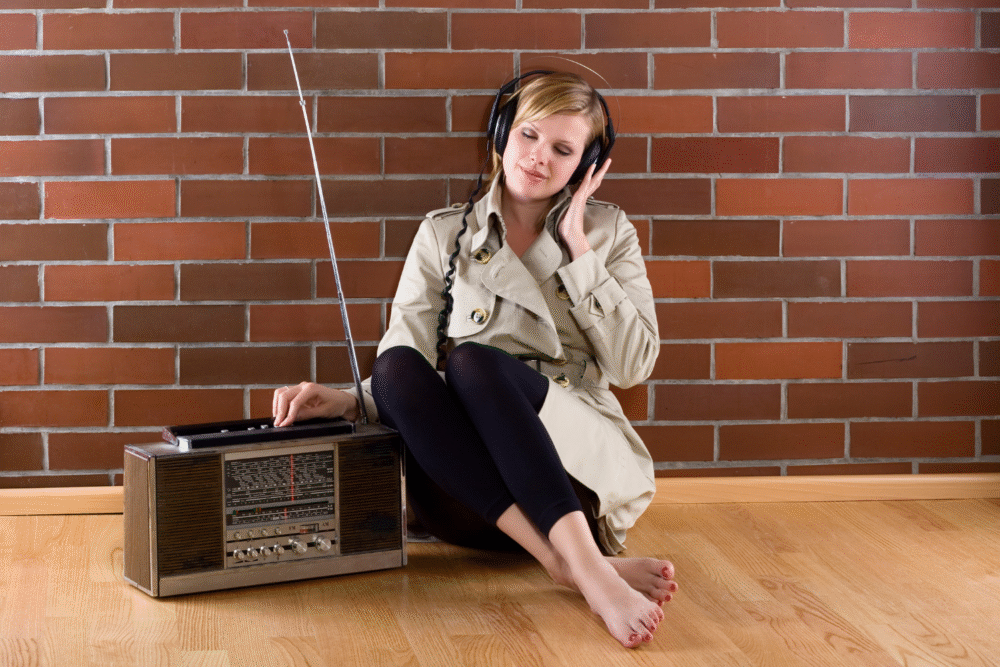Some tools are so useful they outlast trends.

Generations argue about music, style, and politics, but certain devices cross divides. They survive because they answer basic human needs: connection, comfort, and convenience. Whether wrapped in nostalgia or disguised with updates, these tools remain embedded in daily life.
Here are ten devices that refuse to fade, still shaping habits and conversations across decades. Their forms may change, but their essence continues to matter.
1. The telephone keeps conversations personal.

Rotary dials, flip phones, or smartphones—it doesn’t matter. The telephone remains the backbone of connection. Voice carries nuance that texts can’t match, and no generation has let go completely.
Technology enhances the device, but the principle holds. Speaking directly still builds intimacy faster than typing. No app has fully replaced the immediacy of hearing another person’s voice.
2. The radio connects communities.

Decades of car rides, kitchen chores, and quiet nights have been soundtracked by radio. AM, FM, or digital streaming, the format adapts but never disappears.
Its power lies in curation and companionship. People tune in for voices they trust, news they need, and music that surprises. Even in a streaming world, radio remains a constant thread across ages.
3. The television turns homes into theaters.

From bulky boxes to sleek screens, television redefined entertainment. Families still gather around it, whether for sitcoms or streaming. The device survived because it transforms shared space into shared experience.
It teaches that stories feel bigger when consumed together. No matter the decade, the TV anchors living rooms and routines, making it an enduring household staple.
4. The refrigerator revolutionized daily life.

Once a luxury, now a necessity, refrigerators altered how people shop, cook, and store. They reduced waste, extended freshness, and freed households from daily market runs.
Generations agree: no home feels complete without one. It’s a quiet device that supports every meal, proof that innovation doesn’t need flash to transform living.
5. The wristwatch keeps time accessible.

Watches evolved from pocket fobs to smartwatches, but their purpose hasn’t changed: time at a glance. They remain status symbols, fashion choices, and practical companions.
Even in the smartphone era, watches endure because they merge utility with identity. A quick wrist glance is still faster and subtler than pulling out a phone.
6. The stove remains a kitchen centerpiece.

Cooking methods have shifted, but stoves still anchor meal preparation. Gas, electric, or induction—all provide control and consistency that microwaves can’t replicate.
Generations bond around the meals stoves enable. It’s not just about heat; it’s about ritual. The stove stays because it represents nourishment and togetherness.
7. The vacuum cleaner saves hours of labor.

Manual sweeping once consumed time and energy. Vacuums streamlined chores, turning exhausting upkeep into manageable tasks.
Even as robot vacuums take over, the core principle holds. The device survives because clean floors remain non-negotiable. Every generation finds gratitude in the hum of a vacuum doing its work.
8. The car offers independence.

For decades, cars have symbolized freedom. They connect rural and urban, work and leisure, families and friends.
While designs shift toward electric and self-driving, the need for personal mobility remains. Cars endure because they promise control over where and when we move, a desire no generation outgrows.
9. The lamp brightens more than rooms.

Light at the flick of a switch transformed nights into usable hours. Lamps in bedrooms, desks, and living rooms extend possibilities.
Beyond practicality, lamps carry atmosphere. They shape mood and comfort, proving that the simplest devices often mean the most. Every generation embraces light because it turns houses into homes.
10. The computer defines modern work.

Once room-sized, now pocket-sized, computers remain the engines of productivity. Each generation adapts to them differently, but all depend on their power.
Spreadsheets, emails, design software, and browsing—the computer’s reach is universal. Its resilience proves that tools which multiply capability become permanent fixtures, regardless of form.
